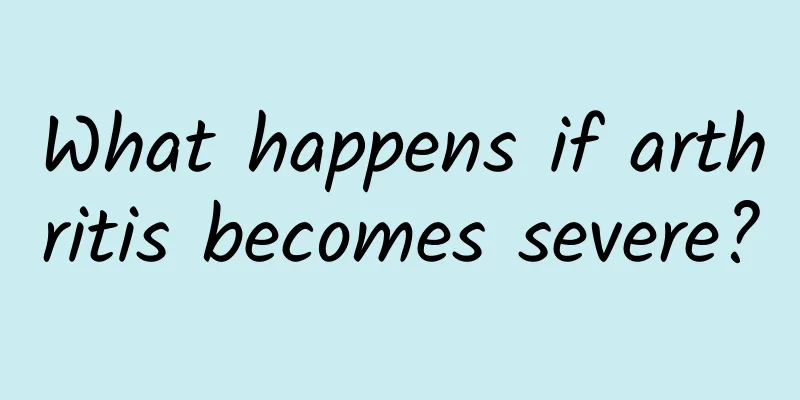How to tell if there are bugs in your brain?

|
The human brain is a very important organ in our body. If there is a problem with the brain, our body movements will also be affected. Many people have been tortured by headaches. Most people think that headaches are likely caused by diseases. In fact, if there are parasites in the brain, it will also cause headaches. Moreover, if there are parasites in the brain, it will cause great harm to our body. Only if we understand the symptoms of brain parasites can we treat them early. What are the signs of parasites in the brain? 1. Brain parenchyma type Clinical symptoms are related to the location where the cysts are parasitic. Cysts located in the cortex cause generalized and partial epileptic seizures. In 30% to 40% of patients, epileptic seizures are the only symptom; hemiplegia, sensory loss, hemianopsia, and aphasia may also occur. Cysts located in the frontal or temporal lobes may cause dementia and mental symptoms. Cysts in the cerebellum cause ataxia, and damage to blood vessels can cause stroke. 2. Arachnoid type Rupture or death of meningeal cysts can cause headaches, communicating hydrocephalus, and asthenic meningitis; cysts in the basal cistern can cause obstructive hydrocephalus; involvement of the spinal arachnoid membrane can cause meningitis and complete obstruction of the subarachnoid space. All of the above may result in clinical manifestations of increased intracranial pressure, headache, vomiting, and positive meningeal irritation signs. 3. Ventricular type The cysts parasitize in the cerebral ventricles and can block the circulation of cerebrospinal fluid in the third and fourth ventricles, leading to obstructive hydrocephalus. The cyst can move within the ventricular cavity and suddenly block the median foramen of the fourth ventricle, causing a sudden increase in intracranial pressure, leading to dizziness, vomiting, impaired consciousness and falls, or a small number of patients may suddenly die without any prodromal symptoms. This type of patient often develops subarachnoid adhesions. 4. Spinal cord type Rarely, epidural lesions may occur in the cervical and thoracic regions. The clinical manifestations of brain parasitic diseases vary greatly depending on the location, number and order of infection, development and death of the parasites. The main manifestations include epilepsy type, increased intracranial pressure type, meningoencephalitis type, mental disorder type, brain tumor type, stroke type, spinal cord type and mixed type. Patients may have symptoms of intracranial hypertension such as headache, epileptic seizures, psychiatric symptoms and intellectual disabilities, as well as limb paralysis and aphasia caused by cerebrovascular inflammatory changes or occlusion. They may have fever in the acute phase after infection, and lesions in the fourth ventricle may manifest as Brun's sign. Physical examination may reveal signs of meningeal irritation and focal neurological localization signs. In severe cases, there may be impaired consciousness, coma, and brain herniation. |
<<: Throbbing pain on the left side of your head?
>>: Is the left side of your head throbbing with pain?
Recommend
Do I need to hold my urine when doing color ultrasound? Preparations for color Doppler ultrasound
Many color ultrasounds require holding urine. The...
How to use scraping to slim your calves
Gua Sha is a very traditional Chinese medicine di...
How long can a kidney dialysis patient live?
Renal dialysis is a medical method that removes t...
Appendicitis acupuncture points
Appendicitis is a very common disease in the huma...
How to use vinegar to test pregnancy
The accuracy rate of using vinegar to detect whet...
The gestational sac fell off, is it a miscarriage?
It is well known that the gestational sac is an i...
What should I do if my feet sweat?
It is uncomfortable to have sweaty feet frequentl...
Is blood in stool caused by hemorrhoids serious? What effects will it have on the human body?
Hemorrhoids are a common anorectal disease, and p...
Sudden severe abdominal pain in early pregnancy
There are many reactions in the body during early...
How to eliminate breast edema
In daily life, breast edema is quite common. Ther...
Tips for removing bruises on legs
Many people often get bruises on their legs due t...
Causes of human deformities
If a child is born with human deformities, it wil...
The efficacy and function of motherwort
Leaf motherwort is not common in daily life becau...
How to reduce swelling after a bruise
In our daily lives, there are many times when we ...
Hold ginger in your mouth for a few minutes to treat toothache
Ginger is a little trick that everyone knows to c...









